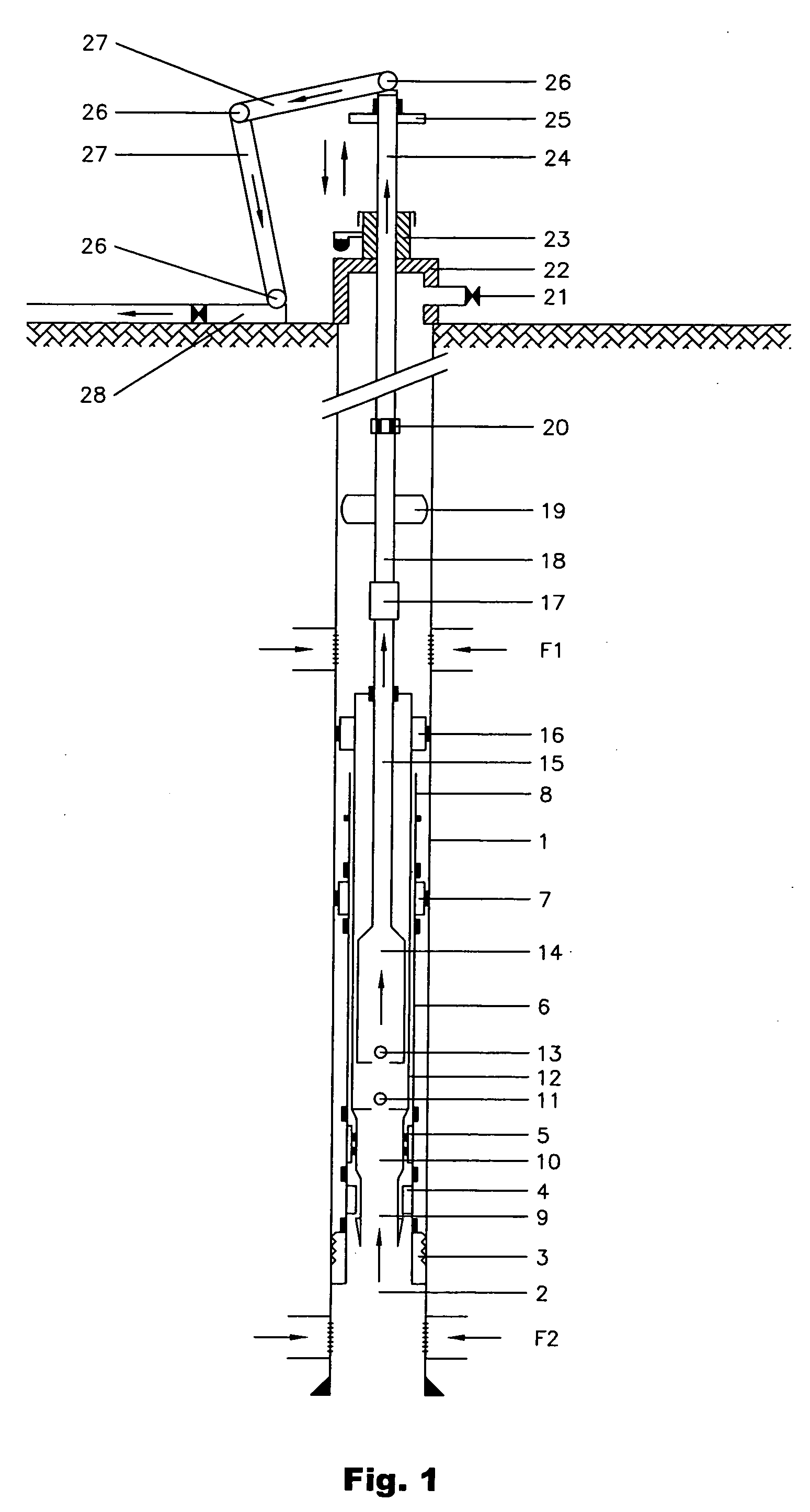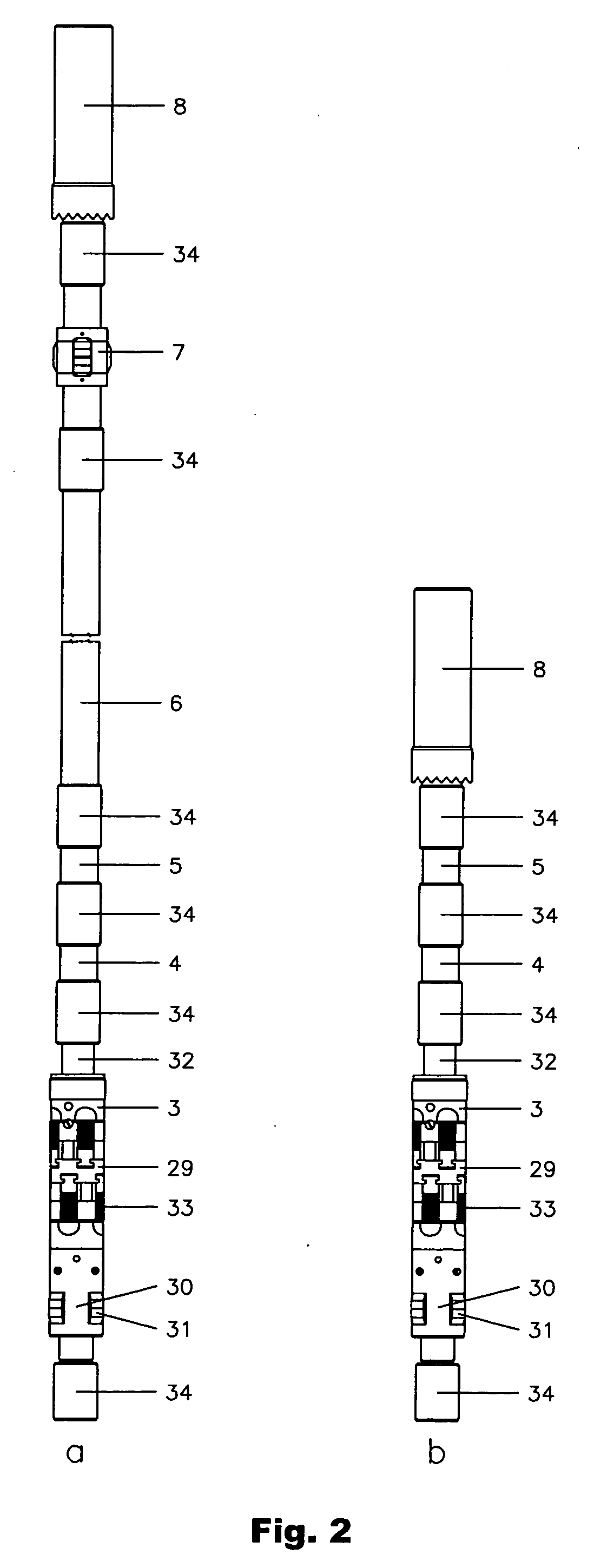Assembly and method of alternative pumping using hollow rods without tubing
a technology of hollow rods and tubing, which is applied in the direction of positive displacement liquid engines, wellbore/well accessories, sealing/packing, etc., can solve the problems of rod and/or production tubing breaking, damage to the system, and no new oil fields found, etc., to achieve easy assembly, installation and handling, and simple and robust
- Summary
- Abstract
- Description
- Claims
- Application Information
AI Technical Summary
Benefits of technology
Problems solved by technology
Method used
Image
Examples
Embodiment Construction
[0063]FIG. 1 shows a perforation made in an effluent producing geological formation containing, for instance, hydrocarbons. The borehole wall is lining by a casing tube 1. Preferably, the tube 1 is fixed or anchored to the borehole wall by a concrete layer injected in the annular space between the casing external face 1 and the borehole face. At pre-selected depths zones, according to previous geological studies, the casing and the concrete are perforated or drilled to allow the free entry of fluid from the reservoir. Two fluid access layers (F1, F2) at different depths are illustrated in FIG. 1. In this case, a multilayer exploitation is illustrated.
[0064] In general, as shown by the scheme of FIG. 1, the reciprocating axial pumping system of the present invention, combines a rigid well head 22 that provides a casing venting exit 21, a hollow sucker rod string 18 with centralizers 19, a reciprocating axial deep well pump and a stationary bottom set that allows to anchor the recipr...
PUM
 Login to View More
Login to View More Abstract
Description
Claims
Application Information
 Login to View More
Login to View More - R&D
- Intellectual Property
- Life Sciences
- Materials
- Tech Scout
- Unparalleled Data Quality
- Higher Quality Content
- 60% Fewer Hallucinations
Browse by: Latest US Patents, China's latest patents, Technical Efficacy Thesaurus, Application Domain, Technology Topic, Popular Technical Reports.
© 2025 PatSnap. All rights reserved.Legal|Privacy policy|Modern Slavery Act Transparency Statement|Sitemap|About US| Contact US: help@patsnap.com



